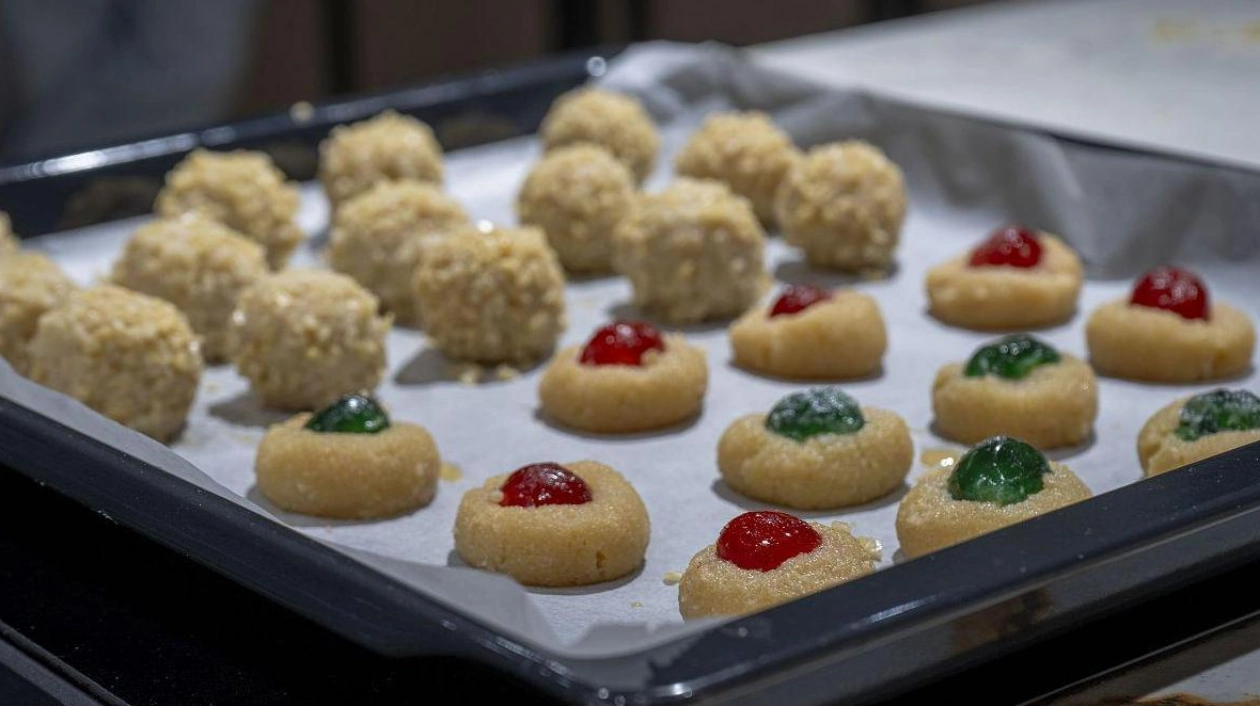Panellets are small marzipan balls that can be coated with sliced pine nuts or diced almonds before being baked in the oven. Similar to Mexico's Day of the Dead, these treats are often prepared in honor of departed loved ones, especially on All Saints' Day (November 1st). This practice has also become a Catalan tradition marking the change of seasons, where families enjoy seasonal foods and wines, such as hot roasted chestnuts, sweet dessert wine, and foraged mushrooms. Making panellets is considered a family tradition, often passed down from parents to children.
To learn the art of making panellets, I visited La Patente cooking school in Barcelona, guided by professional chef Mayera Armas. Organized by Barcelona-based airline Vueling to promote Catalan culture, Armas led a group of journalists through the process. As someone who struggles with basic cooking, I enlisted the help of my son, Jack Keeley, a keen cook who had made panellets before. Together, we tackled the recipe, starting with boiling water and sugar to create a syrup, then mixing in almond powder. Separate egg whites and yolks were added, followed by kneading the mixture to form a long marzipan sausage. This was then cut into 20-gram pieces and rolled into balls.
The next step involved coating the marzipan balls with either pine nuts or diced almonds, using beaten egg white to help the nuts adhere. For a different flavor, one could also insert crystallized cherries into the center of each panellet or coat them with salted chocolate and orange. Quince jam, a traditional Spanish autumn produce, is another popular addition. Once prepared, the panellets are baked for about ten minutes at 200-220 degrees Celsius. It's recommended to let them sit for a day or two before enjoying, as they taste better after resting.
Armas, originally from Venezuela but residing in Barcelona for 20 years, emphasized the significance of panellets in Catalan culture. "Panellets are very important because it is the day you remember your relatives who have died. So, you get together with your family or friends and you go to the cemetery," she explains. "It is also the start of autumn. You can be eating panellets for two weeks and then they are gone." She also highlighted the importance of using fresh, local ingredients, such as flowering almond trees and pine nuts.
Over time, immigration to Catalonia has influenced the recipe, introducing new flavors like chocolate and quince jam. Armas hopes to preserve this tradition, which has no connection to Halloween. She also stressed the necessity of enjoying panellets with a "little" glass of muscadel, typically consumed by tilting a porrón and swallowing in one go. While I struggled with this technique, my son managed it effortlessly, much to my embarrassment.
Source link: https://www.euronews.com






